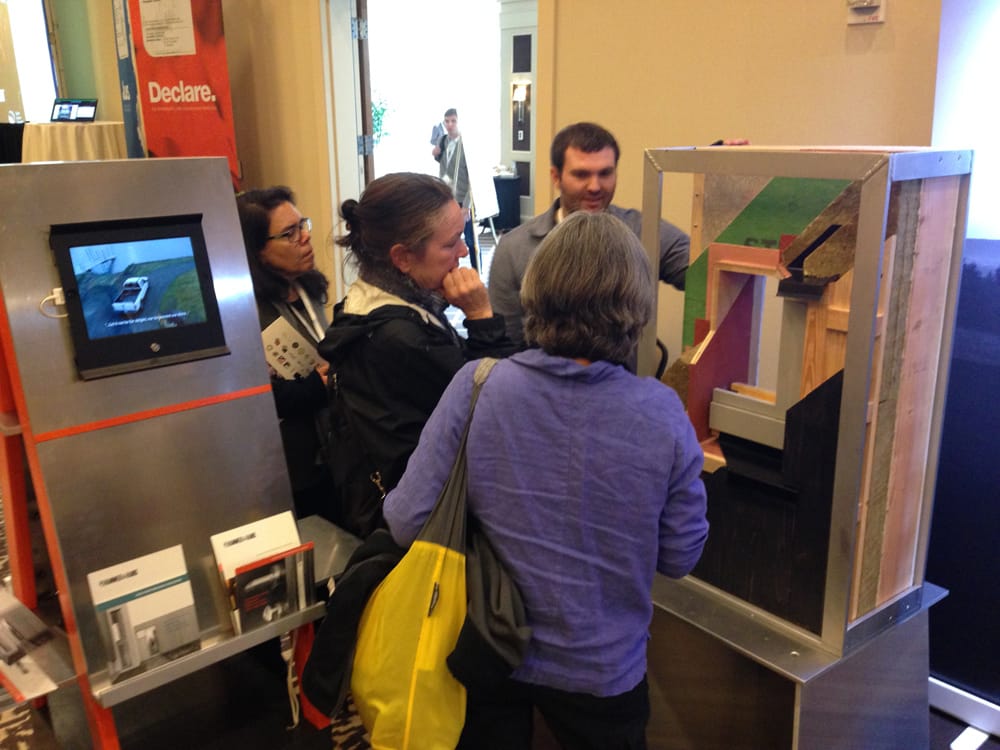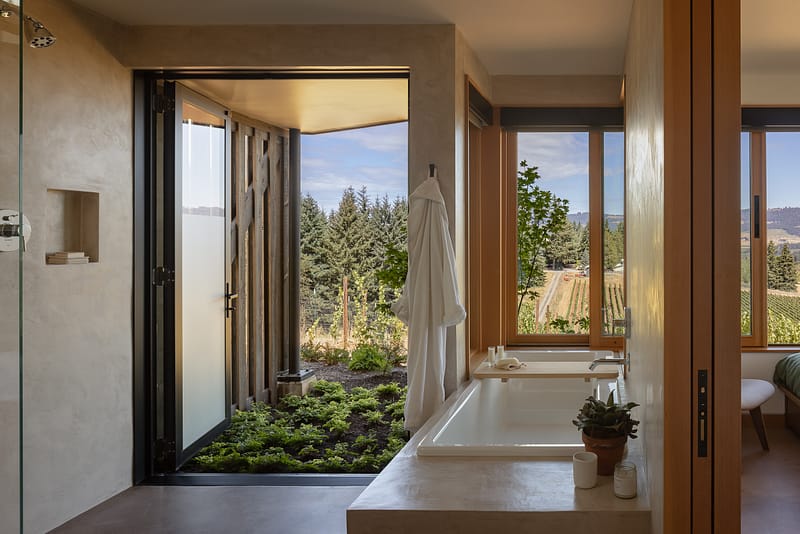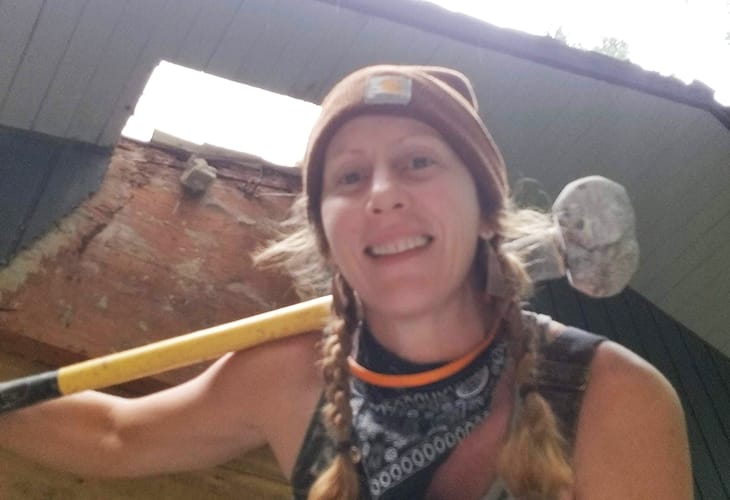ROXUL mineral wool has become a go-to choice of monolithic exterior insulation for us at Hammer & Hand. It is made of stone, fairly nontoxic, and easy to work with. What’s more, it’s extremely fire resistant and hydrophobic, so it works great as part of the rain screen systems that we install on every high performance building we construct.
For all of these reasons we built mineral wool into the sample wall assembly that we recently exhibited at the Living Future conference in Seattle. The assembly got a great reception, with tons of questions about its insulative properties, airtightness, and moisture management. But one question that nagged at us afterwards was: “Given that formaldehyde is used in its production, isn’t mineral wool on the Living Building Challenge’s Red List?”

Passive House expert Skylar Swinford explains our Passive House wall assembly to a few Living Future unConference 2015 attendees.
It’s a good question, because the Red List (the list of chemical compounds prohibited in Living Building construction) does include added formaldehyde. However, the Bullitt Center, perhaps the world’s most prominent certified Living Building, used ROXUL mineral wool for its exterior insulation layer.
To get the skinny I emailed Joe David, Point 32’s mastermind-of-materials for the Bullitt Center project, with the query: “is mineral wool verboten now?”
The short answer: “no.”
David explained that while mineral wool was not allowed in LBC 2.0 due to the formaldehyde, the Bullitt Center team was able to secure an exception for it because it was the only insulation product available that was both non-combustible and could live on the wet side of the WRB (water-resistive barrier).
Recognizing the value of the material to other Living Building projects, the International Living Future Institute went on to grant an exception for rigid mineral wool when they released LBC 3.0.
Here’s the official Red List exception language as found in the DECLARE Manufacturer’s Guide:
Exception I10-E9 (3/2013)
PHENOL FORMALDEHYDE IN MINERAL WOOL INSULATION
Phenol formaldehyde is allowed in rigid mineral wool insulation for exterior applications (such as rain screen assemblies or foundation insulation). While rigid mineral wool insulation does contain some formaldehyde, most of the formaldehyde is eliminated in the production process through a chemical reaction and high heat. Rigid mineral wool insulation installed on the exterior of the building possess less risk to humans and ecosystem than rigid foam insulation products, which almost always contain HFRs (Halogenated Flame Retardants) and use blowing agents with high global warming potential.
For more about mineral wool and our application of it at Madrona Passive House, see this video:




